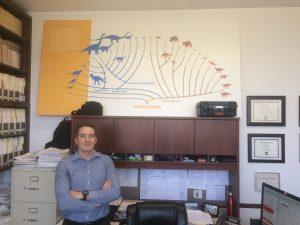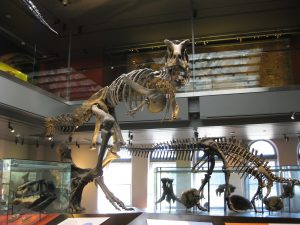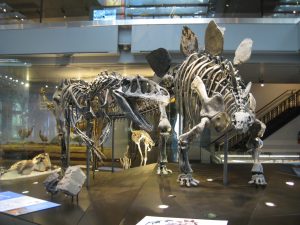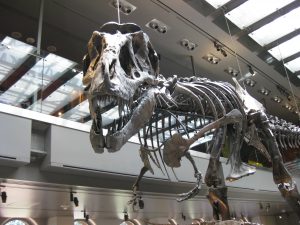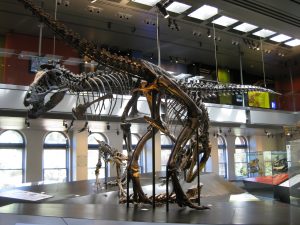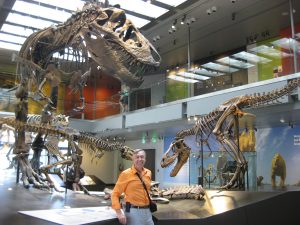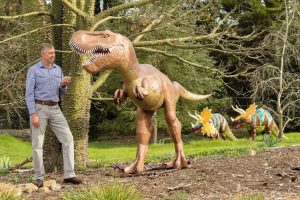During my visit with Nathan D. Smith, PH.D. Associate Curator The Dinosaur Institute, we discussed where animals fall on the Cladograms. I have often found this very confusing when reading different writer’s articles. Nate suggests looking at the evolution of animals as a line in time. Scientists created groups for Fish, Amphibians, Mammals, Reptiles, Pterosaurs, Dinosaurs and Birds due to common characteristics. All Fish have certain unique attributes. At some point along the line some fish developed lungs moving them to a different point on the time line and creating a new branch. Some of those grew legs and crawled onto the land creating another branch. Each new major development creates a new branch and species with their own evolutionary path on the Cladogram. In studying fossils, paleontologist discoveries can change the way they look at certain species. This can and often does rearrange the Cladograms for various groups. Remember the first part of this post, the discovery of Tawa Hallae. The Cladogram was rearranged due to commonalities and differences with some early dinosaurs. As in our lives change, learning and adapting is ongoing.
Nate in his office in front of the Dinosauria Cladogram
As I have mentioned previously my desire to have “More Teeth” at the Park. Making life size and more lifelike Dinosaurs requires more detailed measurements than provided in many books. Nate was very helpful in suggesting additional resources. Scholar.Google.com is a site that allows you to search by dinosaur name or researcher/expert for that particular dinosaur. The results are documents that often contain images! Images of the entire dinosaur skeleton are very useful. You can usual find documentation of hip height and overall length. This information can help you scale the rest of the image. Nate sent me a couple of skeleton images to get me started – Allosaurus, Carnotaurus and Dimorphodon.
Nate indicated searching “the open dinosaur project” could provide another source of information. I am working on another project that requires the size of various dinosaur footprints. Both these resources will be useful in obtaining this data. It was a fun and helpful visit with Nate. My Membership in the “Fellows” Program made it possible.
See previous post “Natural History Museum Los Angeles – Membership has its Privileges” for more information on the Museum’s Membership Programs or go directly to their site. www.nhm.org click on the Join Us tab, select Membership, then Levels Benefits in the drop-down menus to see which one is best for you. There are many advantages to having a membership and it’s a great way to support the Museum!
Nate is featured in the Museum’s “Curiosity Show” episode 13 in a discussion regarding “Augustynolophus” the Dinosaur that may become California’s State Dinosaur! https://nhm.org/nature/video/the-curiosity-show
The “Curiosity Show” is in its second year of providing monthly episodes – check them out!
As I mentioned in my previous post, I couldn’t leave without another visit to Dinosaur Hall.
Did you know in Dinosaur Hall you can find?
- More than 300 real fossils and 20 complete Dinosaurs and Sea Creatures
- These 20 mounts have never been on display before or have been repositioned to the latest research
- The T-Rex growth series is the only trio in the World
- And You have the ability to get really close to the displays
- The multi-media stations show you excavation of specimens with footage never seen before of a real dinosaur hunting expedition
Wishing you a Week Inspiring Wonder, Discovery and Responsibility for our Natural and Cultural Worlds.
Paul & Prehistoric Pals
Your feedback is appreciated, Thank you!
